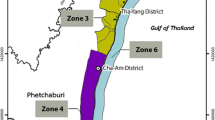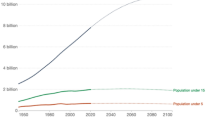Abstract
While there has been sustained debate on the issue of provincial and state versus local government environmental planning, maintaining privately owned natural resources in the public interest is increasingly viewed as beyond the scope of local governments alone. This paper describes and compares province- and state-level mandates and options for local governments (i.e., city, county, or district) to regulate land uses of environmentally sensitive areas (ESAs) in British Columbia in Canada and in Washington and Oregon in the United States. We define ESAs as landscape elements or places that are vital to the long-term maintenance of biological diversity, soil, water, and other natural resources, especially as they relate to human health, safety, and welfare, both on-site and in a regional context. Underlying similarities are that all three jurisdictions legally express the need for land-use planning by local governments in managing ESAs. Although all three jurisdictions exhibit similar problems in their attempt to accomplish this, ESA planning by local governments is an optional process in British Columbia and Washington but mandatory in Oregon. Furthermore, actual processes prescribed by each of the three jurisdictions are quite different. The information base upon which local regulation of privately held ESAs depends is variable, both within and between the province- and statelevel jurisdictions. Other than for some specific water-related resources, standard definitions and inventory methods for ESAs are lacking, as is coordination among local governments or among the province- and state-level governments. This study concludes that there is a need for a regional environmental information system in the Pacific Northwest based upon an integrated and scientific approach toward ESA structures and functions.
Similar content being viewed by others
Literature cited
Abbott, G., Jr., and C. H. W. Foster. 1986. A land conservation strategy for the New England region. Monograph 86-9, Lincoln Institute of Land Policy, Cambridge, Massachusetts, 40 pp.
Adriaanse, A., R. Jeltes, and R. Reiling. 1988. Towards a national reference center for environmental information in the Netherlands: A review.Environmental Management 12(2):145–149.
Allen, T. F., and T. B. Starr. 1982. Hierarchy: Perspectives for ecological complexity. University of Chicago Press, Chicago, Illinois, 310 pp.
Babcock, R. F. 1966. The zoning game: Municipal practices and policies. The University of Wisconsin Press, Madison, 202 pp.
Bastedo, J. D., J. G. Nelson, and J. B. Theberge. 1984. Ecological approach to resource survey and planning for environmentally significant areas: The ABC method.Environmental Management 8(2):125–134.
Bormann, F. H., and G. E. Likens. 1979. Pattern and process in a forested ecosystem. Springer-Verlag, New York, 253 pp.
Bryson, T., and C. Levine (eds). 1987. Oregon blue book 87–88. Barbra Roberts, Secretary of State, Salem, 488 pp.
Carpenter, R. A. (ed). 1983. Natural systems for development: What planners need to know. Macmillan, New York, 485 pp.
Cowardin, L. M., V. Carter, F. Golet, and E. LaRoe. 1977. Classification of wetlands and deepwater habitats of the United States. US Department of the Interior Biological Services, Office of Fish and Wildlife Service, US Government Printing Office, Washington, DC, 103 pp.
DeGrove, J. M. 1984. Land growth & politics. Planners Press, American Planning Association, Washington, DC, 454 pp.
Delogu, O. E. 1985. Local land use controls: An idea whose time has passed.Land Use and Environmental Law 16:97–146.
Development Process Advisory Committee. 1986. A guide to the development permit system: Implementing Bill 62. Ministry of Municipal Affairs, Victoria, British Columbia, 30 pp.
Dorcy, A. J. 1987. The management of super, natural British Columbia.BC Studies 73:14–42.
Dunford, R. W., and D. Zander. 1983. Public lands in Washington: Statistical summary. Agricultural Research Center Bulletin No. XB0931, Washington State University, Pullman, 16 pp.
Faludi, A. 1985. A decision-centered view of environmental planning.Landscape Planning 12:239–256.
Forman, R. T. T., and M. Godron. 1986. Landscape ecology. John Wiley & Sons, New York, 619 pp.
Goldstein, L., B. McKamey, and D. Peters. 1988. The Shorelines Management Act and Hood Canal: A case study of the Hamma Hamma mining proposals.The Northwest Environmental Journal 4(1):81–107.
Hardin, G. 1968. The tragedy of the commons.Science 162:1223–1248.
Harris, L. D. 1984. The fragmented forest: Island biogeographic theory and the preservation of biotic diversity. University of Chicago Press, Chicago, Illinois, 211 pp.
Heayn, B. I. 1977. Integrated resource management: BC's regional resource management committees. Thesis. University of British Columbia, Vancouver, 158 pp.
Holling, C. S. 1988. A conversation with Peter Larkin.The Northwest Environmental Journal 4(1):157–169.
Houck, M. C., and R. T. Rogers. 1984. Wetlands, dirt cheap and disappearing.Landmark 1(3):12–19.
Ince, J. G. 1984a. Land use law: British Columbia handbook. Butterworths, Vancouver, 310 pp.
Ince, J. G. 1984b. Environmental law: British Columbia handbook. Butterworths, Vancouver, 285 pp.
IUCN (International Union for the Conservation of Nature and Natural Resources). 1980. World conservation strategy. IUCN, Gland, Switzerland, 71 pp.
Jennings, M. D., and E. Lev. 1986. City of Portland inventory of wetlands, waterbodies and wildlife habitat areas. Unpublished manuscript. Portland Bureau of Planning, Portland, Oregon, 120 pp.
Jennings, M. D., and J. P. Reganold. 1988. Policy and reality of environmentally sensitive areas in Whitman County, Washington, USA.Environmental Management 12(3):369–380.
Jennings, M. D., J. Layne Alfonso, and William Budd. 1988. Use of the environmentally sensitive areas rule by county governments in Washington State.Environmental Impact Assessment Review 8:63–70.
Ketcham, P. W. 1987. Wallowa County enters periodic review.Landmark 4(1):22–24.
Kolankiewicz, L. 1986. Compliance with pollution control permits in the lower Fraser Valley, 1967–1981.BC Studies 72(4):28–48.
Lang, R., and A. Armour. 1980. Environmental planning resourcebook. Multiscience Publications Limited, Montreal, 345 pp.
Ministry of Crown Lands. 1988. BC Land Statistics. Victoria, British Columbia, 58 pp.
McHarg, I. L. 1969. Design with nature. Doubleday/Natural History Press, Garden City, New York, 198 pp.
Moor, V. 1983. The public control of land use: An anglophile's view. Pages 85–98in J. H. Carr and E. E. Duensing (eds.), Land Use Issues of the 1980's. Center for Urban Policy Research, Rutgers University, New Brunswick, New Jersey.
1000 Friends of Oregon. 1987. Forestry for timber, water, and wildlife.Landmark 4(1):24–26.
O'Neill, R. V., D. L. DeAngelis, J. B. Waide, and T. F. H. Allen. 1986. A hierarchical concept of ecosystems. Princeton University Press, Princeton, New Jersey, 253 pp.
Oregon Administrative Rules. 1981. Chapter 660. Land Conservation and Development Commission, Salem, Oregon, 74 pp.
Oregon Land Conservation and Development Commission. 1985. Statewide Planning Goals. Salem, Oregon, 24 pp.
Oregon Department of Land Conservation and Development. 1987. Oregon Land Use Statutes. Salem, Oregon, 108 pp.
Popper, F. J. 1988. Understanding American land use regulation since 1970.American Planning Association Journal 54(3):291–301.
Repetto, R. (ed). 1985. The global possible: Resources, development, and the new century. Yale University Press, New Haven, Connecticut, 538 pp.
Revised Code of Washington. 1964. Chapter 36.70, County Planning Enabling Act. Pages 75–135in Revised Code of Washington Annotated, Title 36. West Publishing Co., St. Paul, Minnesota.
Revised Code of Washington. 1965. Chapter 35.63, Planning Commissions Act. Pages 317–338in Revised Code of Washington Annotated, Title 35. West Publishing Co., St. Paul, Minnesota.
Revised Code of Washington. 1983. Chapter 43.21C, State Environmental Policy Act. Pages 400–449in Revised Code of Washington Annotated, Title 43. West Publishing Co., St. Paul, Minnesota.
Revised Code of Washington. 1988a. Chapter 35A.63, Optional Municipal Code Act. West Publishing Co., St. Paul, Minnesota, 250 pp.
Revised Code of Washington. 1988b. Chapter 58.17, Platssubdivisions-dedications. West Publishing Co., St. Paul, Minnesota, 267 pp.
Revised Code of Washington. 1988c. Chapter 90.58, Shorelines Management Act of 1971. West Publishing Co., St. Paul, Minnesota, 232 pp.
Revised Statute of British Columbia. 1987. Chapter 290, Municipal Act. Queens Printer, Victoria, British Columbia, 320 pp.
Robinson, J. L. (ed). 1972. Studies in Canadian geography: British Columbia. University of Toronto Press, Toronto, 139 pp.
Robinson, I. M., and D. R. Webster. 1985. Regional planning in Canada.American Planning Association Journal Winter:23–33.
Rohse, M. 1987. Land-use planning in Oregon. Oregon State University Press, Corvallis, 286 pp.
Rosenbaum, N. 1976. Land use and the legislatures: The politics of state innovation. The Urban Institute, Washington, DC. 93 pp.
Settle, R. L. 1983. Washington land use and environmental law and practice. Butterworth Legal Publishers, Seattle, Washington, 349 pp.
Settle, R. L. 1987. The Washington State Environmental Policy Act: A legal and policy analysis. Butterworth Legal Publishers, Seattle, Washington, 443 pp.
Statute of British Columbia. 1953. Chapter 55, Vancouver Charter. Queen's Printer, Victoria, British Columbia, 10 pp.
Steiner, F. R. 1987. The living landscape: An ecological approach to landscape planning. Unpublished manuscript, University of Colorado, Denver, 306 pp.
The Continuing Legal Education Society of British Columbia. 1983. Municipal Act Amendments. Vancouver, 80 pp.
Thurow, C., and J. Vranicar. 1983. Procedural reform of local land-use regulation. Pages 190–206in J. H. Carr and E. E. Duensing (eds.), Land use issues of the 1980's. Center for Urban Policy Research, Rutgers University, New Brunswick, New Jersey.
Urban, D. L., R. V. O'Neill, and H. H. Shugart, Jr. 1987. Landscape ecology.BioScience 37(2):119–127.
Washington Administrative Code. 1984. Chapter 197-11-908. State Environmental Policy Act Rules. Olympia, Washington, 56 pp.
Yates, R., and C. Yates (eds). 1987. 1987 Washington State yearbook. The Information Press, Eugene, Oregon, 208 pp.
Zoeteman, K., and F. Langeweg. 1988. The organization of integrated environmental research in the Netherlands.Environmental Management 12(2):151–161.
Author information
Authors and Affiliations
Rights and permissions
About this article
Cite this article
Jennings, M.D., Reganold, J.P. Local government policies toward environmentally sensitive areas in British Columbia, Canada; Washington and Oregon, USA. Environmental Management 13, 443–453 (1989). https://doi.org/10.1007/BF01867678
Issue Date:
DOI: https://doi.org/10.1007/BF01867678




